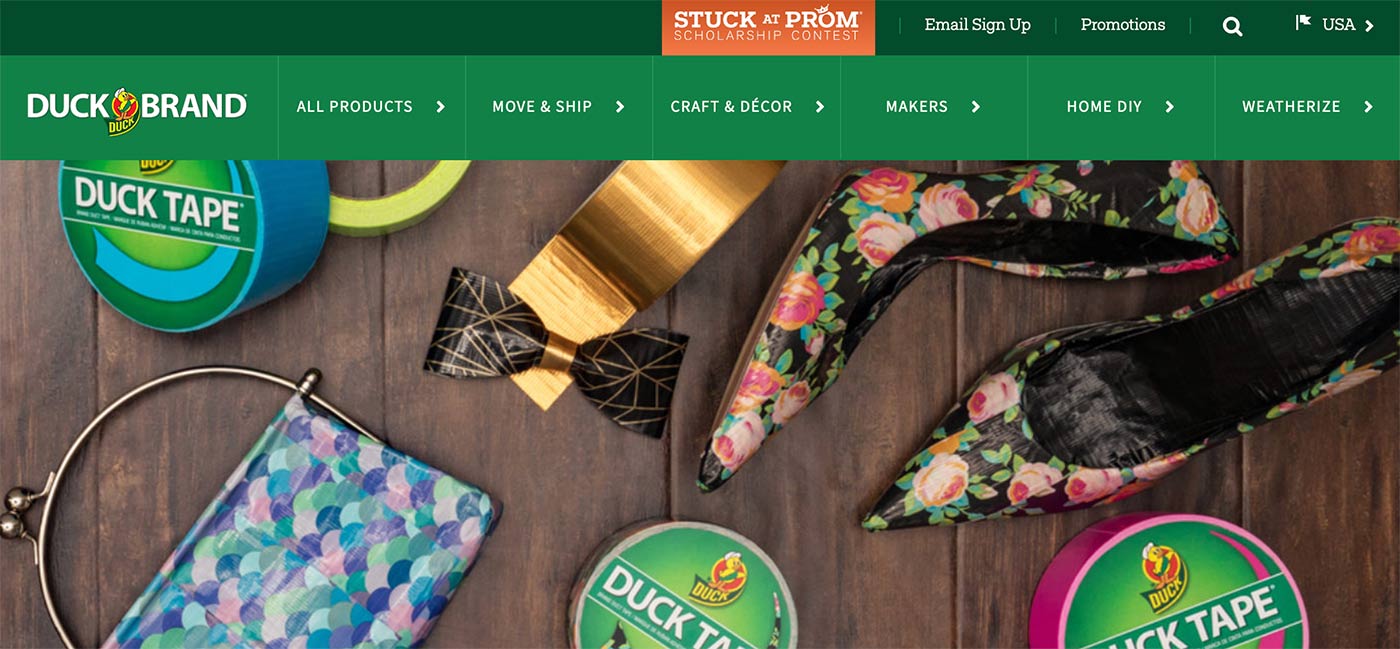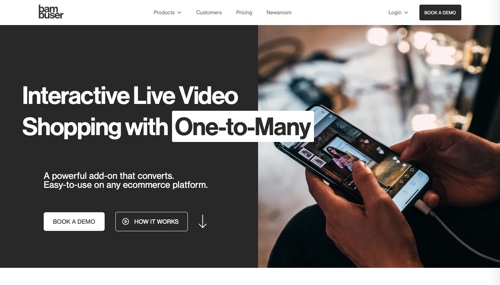The original focus of Sugru, a moldable glue, was repairing household items. But consumers began using the product to build things beyond just repair. Sugru adapted. Now, a good portion of its business stems from making rather than fixing.
For example, truck stops in the U.S. were once exclusive to 18-wheelers. But general motorists discovered advantages — affordable fuel, clean restrooms — of truck stops. Today, truck stops have morphed into “travel plazas,” welcoming nearly any vehicle. They still make big money from truckers, but passenger vehicles also bring in a tidy sum.

Opportunities
Nonetheless, identifying and embracing secondary audiences can further a brand. Be receptive to opportunities. Who knows where duct tape would be if it weren’t for the crafters? What if Duck Tape brand had stuck with just ductwork?

Duck Tape’s home page focuses on its once secondary audience.
Ecommerce sites rely on a primary target audience. These are the people who are most apt to purchase products and become loyal customers. It’s the same audience marketers use for advertising.
Secondary audiences sometimes appear quickly and with such force that they become primary. For years consumers have used duct tape to repair ductwork, pipes, tools, furniture, and more. It’s a staple in home repair projects. But then customers started getting creative with the silver-gray tape, such as making purses and clothes. Duck Tape brand embraced the trend. Today, it is available in hundreds of patterns, colors, and sizes.
Telltale Signs
Identifying promising secondary audiences is not always easy, but there are telltale signs.
- Demographics. Review analytics to find runner-up groups that shop with you.
- Customer reviews and Q&A. People love sharing their alternate uses of products. Others will ask if specific products can be used for different purposes.
- Social media. When monitoring brand mentions, pay attention to how people are using the product.
- Lightweight surveys. Many loyal customers will respond to requests for feedback. Ask if they use the products as intended, and include an “other” field for varied responses.
Most recently, during the pandemic the general public began purchasing products directly from manufacturers and distributors. It opened the door for many B2B companies to sell direct-to-consumer.
New secondary audiences present challenges. Some require a reworking of the online store’s navigation and customer service policies. Others may inspire you to create more products that resonate with the newer audience, requiring a well-planned marketing campaign.




